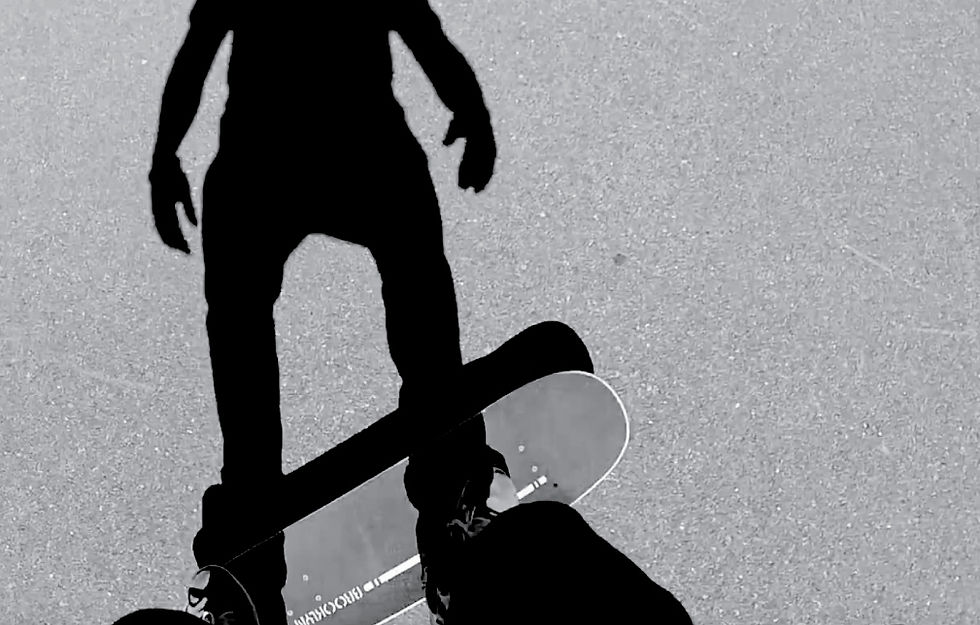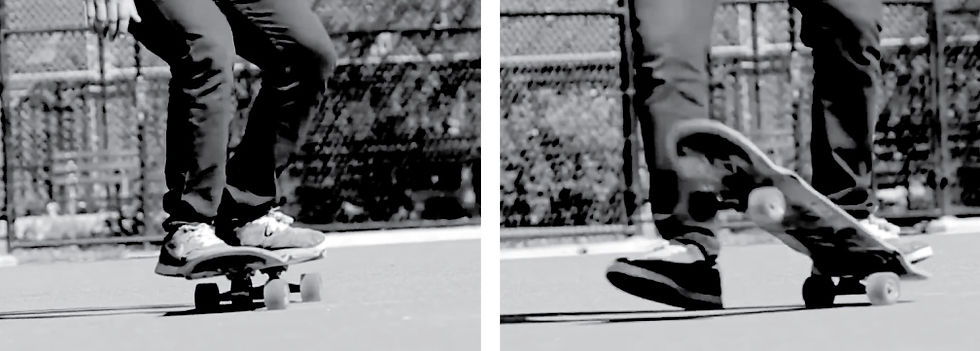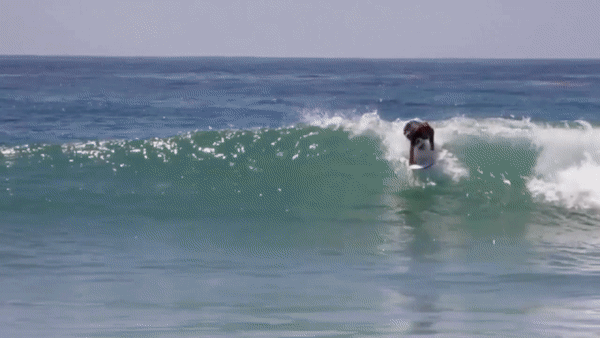How to do a Vintage No Comply
- Yocaher Admin

- Nov 16, 2017
- 4 min read

If you’ve been watching skate videos lately, you’ve probably noticed the resurgence of the no comply. This classic trick was hugely popular in the 1980s, but its popularity waned over time. Retro is all the rage now, though, and the no comply is experiencing its second turn in the spotlight. If you’re thinking that no complies look difficult, and that you’ll never be able to do one, give them a chance. They’re actually pretty easy once you learn a couple key moves.
One of the reasons no complies went extinct is because skaters in the early 90s considered them dated. Skateboarding was in the midst of a street revolution at the time. Skaters were turning their backs on the ways of the past. Vert skating, no complies, bonelesses, fast plants and hand plants; they all disappeared at once. Modern skaters have a better appreciation of their roots, though, and the no comply is once again a go-to trick.

How to No Comply
The no comply involves stepping off the board with the front foot and popping it up in the air with the back foot. The only way to do it with any real speed is to perform each step as smoothly and quickly as possible. It might help to practice the motion while standing on the board without rolling until you learn to get the board airborne.
There are many variations of this trick, but the two we will work on here are the straight no comply and the frontside 180 no comply. The 180 no comply is the easier trick of the two, but we will focus on the straight no comply first. The setup for the two tricks is exactly the same.
No Comply Setup
Before learning no complies, be sure you have the fundamentals of skateboarding down. You should be able to push and balance as you coast, and you should be able to lean the board to turn. You don’t need to be able to kickflip to be able to no comply, but you’ll setup the same way.
Position the front foot a few inches behind the front truck and hang the heel off the board. Place the back foot in the middle of the spoon in the concave by the tail. This is the spot on the board where the flat part meets the tail, just behind the back truck. The concave and the upturn in the tail form a pocket in this spot, and that’s where the back foot goes.

The No Comply Motion
The key to starting the no comply is to step off the board the correct way. Do not simply unweight the front foot and step on the ground. Rather, gradually apply pressure on the front foot and slide it sideways until it slips off the edge of the deck. The pressure will make your foot hit the pavement quickly, at which point you’ll scoop the tail. The faster you’re rolling, the more important it is to do everything at once, all in one fluid motion.

Scoop, Don’t Pop
For the no comply to work, the board has to pop straight up while your front foot is still on the ground. To make this happen, you need to push the board backward, opposite your direction of travel. The feeling is that you scoop the board up with your back foot, rather than popping the tail on the ground like an ollie. You can learn this move by simply standing on your lead foot next to the board. Practice scooping the board up until you can get it to stick to your foot.
Leveling the Board
This is where the trick gets tricky. When you scoop the board, it will go nose up and move toward your back leg. To level the board out, move your back knee out of the way and allow the nose to contact the inside of your thigh. If the deck strikes your knee it’s going to hurt, so concentrate on catching the nose with the lower part of your inner thigh.

Once you can catch the board with the rear leg, practice pushing it back down again. When you get the hang of it, the board will level out like it does during an ollie. At that point, you should already be jumping back onto the board. When you time it correctly, you should be able to get the front foot on the board when it is at its highest point, enabling you to no comply onto and over obstacles.
Frontside 180 No Comply
It’s easier to do a 180 no comply than to do it straight because there is no need to catch the board with the rear leg. You approach the trick exactly as you would a straight no comply. The difference is, when you scoop the board, push the tail frontside. It helps to lean back a bit during the scoop. Doing so forces the board to move forward as it turns, so that it goes in the direction you’re traveling.
With a bit of practice, you’ll soon have your back foot sticking to the board as it turns 180. Then, you only need to jump back onto the board. Another thing that makes the frontside 180 no comply easier is that you can just step off the board, rather than pressuring your front foot. Once you have frontsides down, try doing it backside. The only difference is that you step off the opposite side of the board — and you can’t see where you’re going!



Conclusion
Skateboarding is in a beautiful place. For the first time in a long time, everything is cool. The lines between transition skating and street skating have blurred, and most skaters are proficient at both disciplines. There is a growing nostalgia for times gone by, and many of the old standby tricks are back with a vengeance. All of the sudden, everyone who’s anyone is busting no complies.
Time will tell if the current state of skating is just a fad, like big pants and small wheels. It could just be that the time was right for some skate nostalgia. Maybe a new wave of skateboarding — with all new tricks — is just around the corner.
All the same, learning to no comply is still worth the effort. It always was an interesting way to negotiate obstacles on a skateboard. Rather than pick the board up and walk over to the other side, skaters in the 80s learned to step off and smack the tail to jump over things. It wasn’t the prescribed way to get around, but they simply would not comply.




toto slot, toto slot, toto slot, raja168, raja168, toto slot, toto slot, toto slot, raja168, raja168, toto slot, toto slot, toto slot, raja168, raja168, toto slot, toto slot, toto slot, raja168, raja168, toto slot, toto slot, toto slot, raja168, raja168, toto slot, toto slot, toto slot, raja168, toto slot, toto slot, toto slot, raja168, toto slot,
slot88, slot88, slot88, fijislot, fijislot, slot88, slot88,
slot gacor, slot gacor, slot gacor, fijislot, fijislot, slot gacor,
slot gacor, slot gacor, slot gacor, raja168, raja168, slot gacor, slot gacor, slot gacor, raja168, raja168, slot gacor, slot gacor, slot gacor, raja168, raja168, slot gacor, slot gacor, slot gacor, raja168, raja168, slot gacor, slot gacor, slot gacor, raja168, raja168, slot gacor, slot gacor, slot gacor, raja168, raja168, slot gacor, slot gacor, slot gacor, raja168, raja168, slot gacor, slot gacor, slot gacor, raja168, raja168, slot gacor, slot gacor, slot gacor, raja168, slot gacor, slot gacor, slot gacor, slot gacor, slot gacor, slot gacor, slot gacor, slot gacor, slot gacor, slot gacor, slot gacor,
slot thailand, slot thailand,